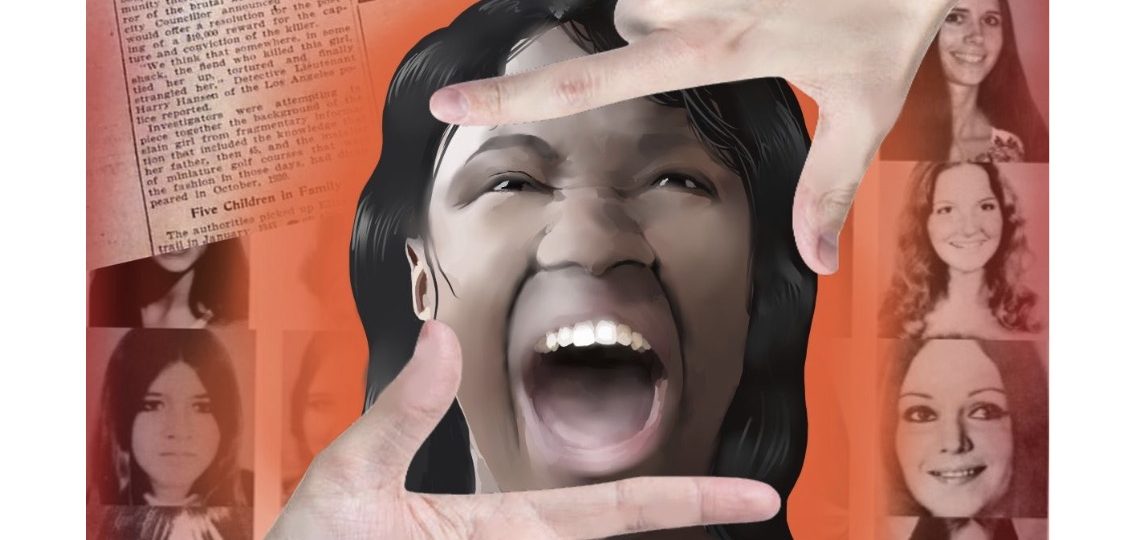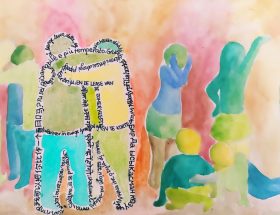The current obsession with True Crime documentaries is undeniable – from the incredibly popular ‘Serial’ podcast, to the recent Netflix docuseries Conversations with a Killer: The Ted Bundy Tapes and Making A Murderer, True Crime is certainly having a moment. It plays into the darker side of our collective minds, the side that loves a villain often more than we love the hero, the side that can’t look away from a train wreck, the side that indulges in horror movies and slasher flicks. The reasons for enjoying these explorations of evil are psychologically sounds, and in no way unhealthy (for the most part). A part of us watches with a feeling of thankfulness that we are not the victims. We watch for the adrenaline rush, the same adrenaline rush that has made Stephen King a household name and created world famous theme parks. We attempt to solve the mystery – true crime presents a puzzle for our brain to solve, challenging us to find an answer before it is revealed to us. True Crime allows us to explore the darker side of the human race from the safety of our home. True Crime is told in a way that is comforting – it is told with the knowledge of hindsight, and importantly the knowledge that the killer is found, either behind bars or dead.
True Crime can be comforting, stimulating, and shocking. Yet it also can be damaging to our collective consciousness.
True Crime, at least in its most popular, mainstream forms, tends to perpetuate the tradition of women as nameless, faceless victims, usually of sexual crimes. Conversations with a Killer: The Ted Bundy Tapes gained notoriety for its claim that it can take you into the mind of the infamous serial killer through shocking interview recordings featuring the man himself discussing the mind of a possible serial killer. This technique seems to fall short of revealing much about the murderer, other than his own seemingly infinite narcissism and obsession with fame. The series falls short more importantly in its portrayal of Bundy’s victims. Famously, Bundy confessed to the rape and killing of 30 women whilst the real number may be closer to 100. Many of these 30 women receive little more than a name drop in Joe Berlinger’s series. Those who are shown on screen in at least a little detail are given the expected summary of their character, their appearance, and most notably their gruesome deaths (and the upsetting assaults that preceded them).
They become, whilst no longer nameless or faceless, female victims who are identifiable by their attractive looks and the sexual crimes they suffered at the hands of a man who was so filled with hatred for women that over 30 lost their lives as a result.
By focusing on the personality cult of Ted Bundy, a man who has personified the world’s ability to sexualise and glamorise brutal (and misogynistic) violence, Berlinger plays into Bundy’s own view of himself. Listening to the tapes, which are little more than Bundy’s self-absorbed monologuing, fabricating for himself a golden boy personality whilst musing on the mind of a possible killer (Bundy has not yet confessed, and is exploring the killer’s mind from a third person point of view, thus avoiding implicating himself), we can imagine that this narcissistic, self-absorbed misogynist would love nothing more than a television series dedicated to exploring his character. Berlinger provides us with exactly that. Indeed, few killers have been repeatedly explored by the media as frequently and as obsessively as Ted Bundy. And yet his victims remain to most unidentifiable, forgettable and, for all intents and purposes, nameless and faceless within ten minutes of finishing the show.
(The repeated use of sexual crimes as entertainment in both True Crime, and fictional television (Law and Order SVU, most notably) begs the question – do we view the raping and brutalisation of women’s bodies as entertainment? The aforementioned reasons for watching True Crime are still valid, but is a by-product of this interest in stories of women such as the victims of Ted Bundy that we are glamorising violence against women, normalising sexual brutality? Ted Bundy was a man with a very specific hatred of women, and his desire to treat women as he did (committing unspeakable acts of sexual violence against them, before murdering them and mutilating their bodies, often continuing to sexually assault them after their deaths) has been analysed and explored by countless experts and viewers. Yet, are his disturbing actions and his unimaginable capacity for violence and hatred worth our obsession? By continually making entertainment which focuses on the perpetrator of these crimes against women (or against men) are we sending out a message that the perpetrator, the murderer, the rapist, the serial killer is more important than the victims?)
In January of this year Rolling Stone did a story on Kathy Kleiner, one of Bundy’s living victims (she survived being bludgeoned in her sleep), a story which explored her views on Bundy and his lasting legacy (which she advocates, in as far as it encourages people to be aware of evil, and know how to fight it), as well as discussing her life before and after the attack. The article points out the problem with the vast library of Bundy media Kleiner has cultivated (full of books, television programmes, bizarre merchandise and references in pop culture) is the incredible focus on Bundy.
Just as Bundy existed, so too did Kathy Kleiner and his other victims, both named and unidentified.
Amongst the masses of articles and features on Bundy, this was the only piece I could find within a few minutes of my search that was focused on a victim. No doubt it has received far less attention, and yet the effort to depict his victim as a three-dimensional person is admirable – up until that point, I had only seen such an effort when looking at the murderer, not the murdered.
The legacy of the 30 named victims of Ted Bundy is, naturally, that they were the victims of one of the most famed serial killers of all time. It seems painful, to view the situation from their friends and family’s point of view, that they should have to be regularly resurrected in the form of a docuseries, a film, a True Crime book, simply for them to play the role of Bundy’s victim once again. The man took their lives, and he has now taken their identities. The same can, and should, be said for the many victims of the various crimes that are the fixations of True Crime.
These women, who had names, faces, lives, and futures just as every one of us viewers do, have been reduced to the pitiful sexual victims of a depraved man whose attractive face and charming persona are as much of interest to the general public as his violence against women.
art by: Maria Tassone




